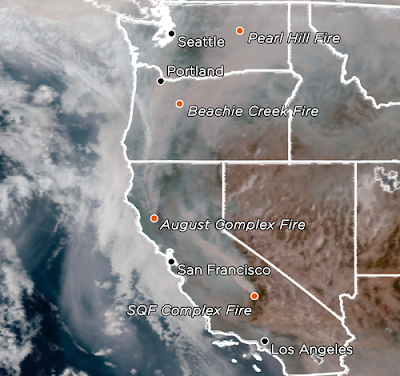In the western United States, wildfires near cities have become normal, but the magnitude and severity of the harmful air pollution they generate have been the worst on record this year.
For longer than previous years, many Americans in populated, metropolitan areas experienced smoke. For the first time ever documented, some areas encountered very toxic or dangerous air from wildfires.
More than 17 million people live in counties where air quality has reached levels considered "extremely unhealthy" or "hazardous," the most ever reported during the fire season. This is the range in which the EPA states that anyone may be at risk of serious health effects, and advises avoiding any outdoor exertion by children, older people, and those with lung disease.
More Counties Saw Longer Periods Of ‘Very Unhealthy’ Air This Year. This year, for the first time ever recorded during the wildfire season, 36 counties in Washington, Oregon, and California experienced extremely poor air quality due to particulate matter, including Multnomah County, Ore., where Portland is located.
In the medical community, the immediate health effects of living in and breathing wildfire smoke are well-known and apparent to anyone who has been exposed: eyes sting, throats tense, snot will turn black. Pollution from smoking can increase heart rates and worsen respiratory conditions such as asthma or chronic pulmonary obstructive disease. Recent studies also indicate that exposure to smoke may lead to an increased risk of COVID-19.






